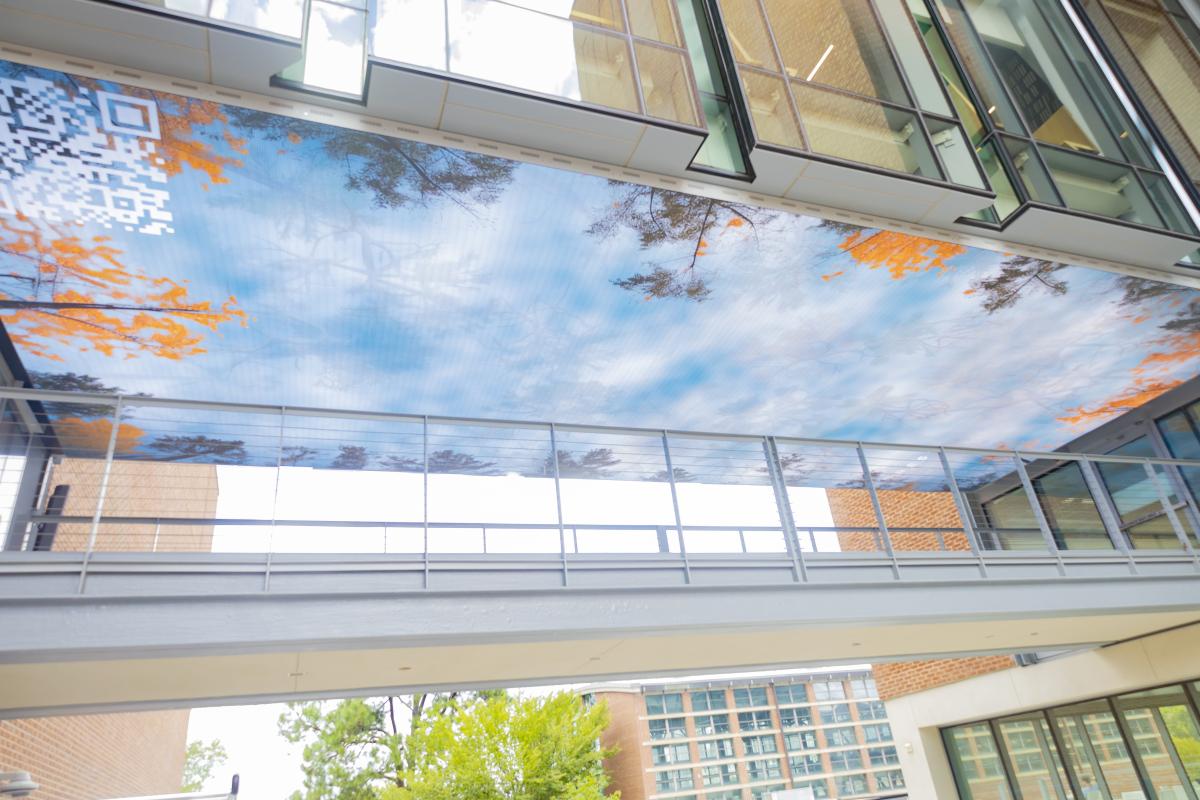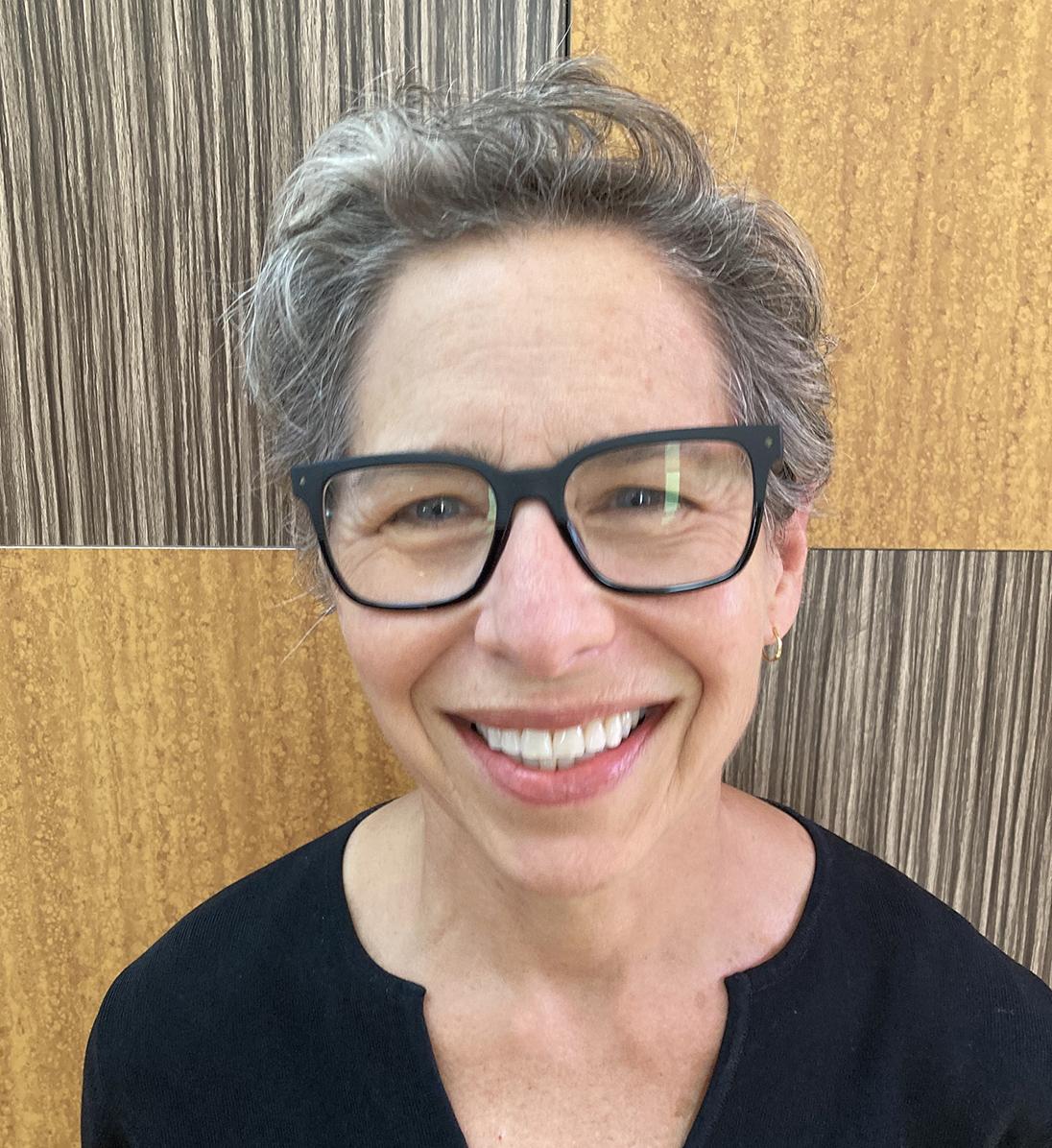Come to the Media Bridge and find a dynamic sky with a few awaiting trees. Look up through the roots: That’s where the tree community intertwines. Connect to engage the latent forest and add a tree. You have to be there. Others who come by or that you might bring with you also add trees to the stand. A sympathetic human group gathers, and together builds the forest stand. Afforestation of the image takes place, and the nascent community assemblage shares the capacity to act.
Gather to celebrate the spectacular canopy that makes Atlanta a tree haven, a City in the Forest. Our canopy is vulnerable. You can act: Plant trees with Trees Atlanta: www.treesatlanta.org
The Site – Media Bridge Vital discourse, whether textual or visual, initiates a bridge between diverse positions and viewpoints. Our intent for Gather the Forest is to achieve working interaction between passers-by, to reward curiosity and exploration, to invite mutual introductions, and to do so through the example of the beneficial interdependency of a forest community.
A forest?
A tree is never alone. Like all living things, it belongs to a community of organisms that depend on each other. Think of the great sequoias: Their roots are all connected, and they hold each other up. Just a few feet below the ground is their massive, interconnected support system. They intertwine to share nutrients and nurture one another.
This Forest?
After dreaming the forest scene in digital modeling software, tree models were exported individually for feeding into an AI image generation tool. Using an image-to-image model, the AI process systematically added an enhanced degree of realism unachievable through standard modeling processes, uniquely to each tree.
The installation is written in JavaScript and runs in the web browser. This code removes backgrounds from the AI-generated images and layers them into one composition with varying opacities. The installation uses a Node.js server to handle communication between viewer’s devices and the installation display. To encourage gathering on site, geolocation is used to only allow participation when near the bridge.
How to gather?
Scan the QR code on the Media Bridge screen and connect to a web page with instructions.

Stuart Romm
Stuart Romm, AIA, LEED AP BD, is a Professor of the Practice at Georgia Tech, having taught architectural design studios and a range of cross-disciplinary, sustainable practice courses in the College of Design for 30 years.
He is also a founding principal in the Atlanta architectural firms of Praxis3 and Romm + Pearsall, both multidisciplinary practices focused on urban revitalization and social sustainability. His work has especially confronted the challenges of affordable housing, beginning with Romm + Pearsall’s award-winning entry to Progressive Architecture’s ‘Affordable Housing Initiative’ and in Praxis3’s Renaissance Walk project on Atlanta’s historic Auburn Avenue, winning a 2012 AIA Honor Award.
Romm was also lead designer for several other award-winning projects, including Fire Station No. 2 in Decatur and the University of Georgia’s College of Environment + Design, which won 2011 and 2013 AIA Georgia Design Awards. He has presented these projects at many international conferences, such as the CIB Tokyo Conference on ‘Urban Regeneration’, the 21st World Congress of the ICLA (Vienna 2016), and the John Lewis Fellowship Program, ‘Humanity in Action’ (Atlanta 2018). His team was also awarded First Place in the national ‘City of the Future’ design competition, sponsored by the History Channel to envision alternative urban models for sustainable growth.
Romm is a main player among those who conceptualized, detailed and install the Georgia Tech Library Media Bridge.

Amy Landesberg
Amy Landesberg is an Atlanta based artist and architect and her work overlaps those boundaries in content, complexity and scope. As an architect she has participated in the design of a wide array of projects, many of which focused on environmental sustainability, including galleries, civic and educational buildings, rapid rail, historic preservation, theater environments, and residences. Architecture has enabled the extremes of scale characteristic of her art practice: The overtly public, architectural scale of, for example, Autoplast, at the San Diego Airport Rental Car Center that explores our disposition to cars. Two giant walls host installations of hundreds of taillights and thousands of side view mirrors mimicking swarm behaviors such as those of insects, or millions of people in cars. The other extreme includes the intimate scale of, for example, Sprouts, the piece of linoleum flooring sprouting false eyelashes from the project about discarded objects in decay, Things Grow Hair.
Environmental stresses fuel the content of her current work which explores the imagery of Natural Forces. Fungal growth as on water-damaged surfaces, topographic changes through erosion, formations of air-borne water vapor, the geometry of light passing through water, the deformation of clay through shrinkage at its loss… Each image, derived from photography, gps data, or scientific illustration, is studied for its organizational power. Selections from this digital, “factual” data are then converted to one of the most basic analog techniques, ink on paper.
Landesberg studied art at Georgia State University and architecture at Yale. Her efforts have been recognized with awards and grants in both art and architecture from the Southern Arts Federation, the Architectural League of New York, the Southern Atlantic Region of the AIA, the Atlanta Urban Design Commission, and the Americans for the Arts Public Art Program. She has taught extensively at Schools of Design including Tulane, Ohio State, Princeton, Georgia State and Georgia Tech.

Hudson Treu
Hudson Treu is an interdisciplinary artist, designer, and creative technologist working between interactive media, machine learning, and computational arts. He is currently completing his master’s degree in human-computer interaction at Georgia Tech, where his work and research focus on the design of intelligent machine interaction in new media.
Hudson works from a background encompassing cognitive psychology, audio production, and computer science and experience as a visual cognition research assistant. Through interactive audio-visuals, his artistic practice explores questions around the nature of intelligence, perception, and experience, utilizing methods including code, sound design, and machine learning.

Jordan Graves
Jordan Graves is an Atlanta-based artist, designer, and educator making art with code in a variety of media, including jewelry, textiles, and interactive installations. She graduated from the Savannah College of Art and Design with a BFA in Motion Media Design. She is currently pursuing a PhD in Digital Media at Georgia Tech where her research includes the relationship between craft and computer science education, building computational design tools, and designing experiences that connect people and spaces through online interaction.